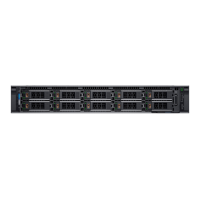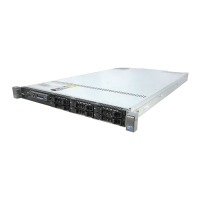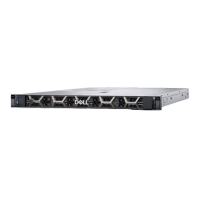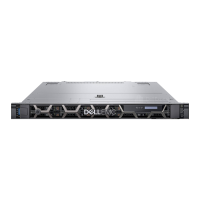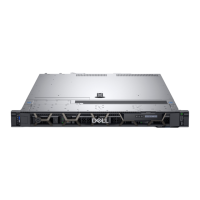After working inside your system
System board
A system board (also known as the motherboard) is the main printed circuit board in the system with different connectors
used to connect different components or peripherals of the system. A system board provides the electrical connections to the
components in the system to communicate.
Removing the system board
CAUTION: Many repairs may only be done by a certified service technician. You should only perform
troubleshooting and simple repairs as authorized in your product documentation, or as directed by the online or
telephone service and support team. Damage due to servicing that is not authorized by Dell is not covered by
your warranty. Read and follow the safety instructions that are shipped with your product.
CAUTION: If you are using the Trusted Platform Module (TPM) with an encryption key, you may be prompted to
create a recovery key during program or System Setup. Be sure to create and safely store this recovery key. If
you replace this system board, supply the recovery key when you restart your system or program before you can
access the encrypted data on your hard drives.
CAUTION: Do not attempt to remove the TPM plug-in module from the system board. After the TPM plug-in
module is installed, it is cryptographically bound to that specific system board. Any attempt to remove an
installed TPM plug-in module breaks the cryptographic binding, and it cannot be re-installed or installed on
another system board.
1. Follow the safety guidelines listed in the Safety instructions section.
2. Follow the procedure listed in the Before working inside your system section.
3. Remove the following:
a. Cooling shroud
b. Memory modules
c. Cooling fans
d. Power supply units
e. All expansion card risers and expansion cards
NOTE:
The heat sink is hot to touch for some time after the system has been powered down. Ensure that you do
not touch the heat sinks while removing the system board.
f. Heat sinks or heat sink blanks and processors or processor blanks
CAUTION:
To prevent damage to the processor pins when replacing a faulty system board, ensure that
you cover the processor socket with the processor protective cap.
g. Integrated storage controller card
h. Network daughter card
i. Internal dual SD module
j. Internal USB key (if installed)
k. Hot-swap hard drives
l. Hard drive backplane
CAUTION:
To avoid damaging the mini SAS cable and connector, follow the correct procedure when
removing the mini SAS cable from the system board.
1. Disconnect the mini SAS cable from the system board:
a. Push the mini SAS cable connector to slide it further into the connector on the system board.
b. Press down and hold the metal tab on the mini SAS cable connector.
c. Pull the mini SAS cable out of the connector on the system board.
146
Installing and removing system components

